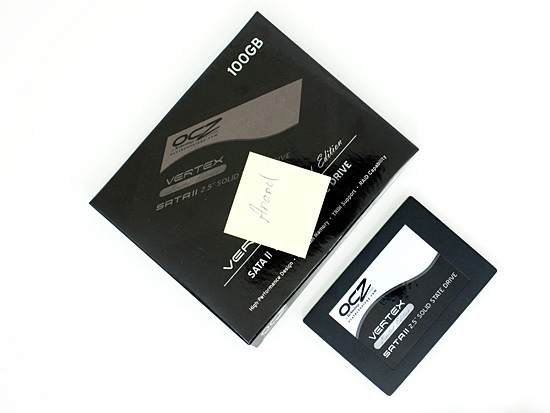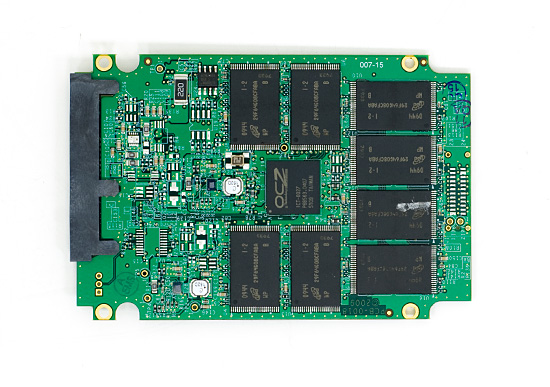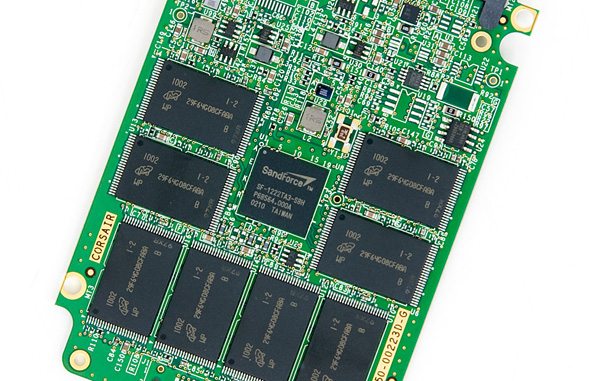Understanding SandForce's SF-1200 & SF-1500, Not All Drives are Equal
by Anand Lal Shimpi on April 16, 2010 11:30 AM ESTLess than 24 hours ago I was called into a meeting with SandForce, the SSD controller manufacturer that has been on fire lately. The company makes two controllers: the SF-1200 and SF-1500. The meeting was initiated by SandForce to clear up any misconceptions I might have about the differences between the two controllers. No good deed goes unpunished, and the quick meeting turned into an hour long debate about responsibility and ethics. It turns out that while I finally know the difference between the SF-1200 and the more expensive SF-1500, not all drives based on the SF-1200 will offer the same performance. In fact, some drives that are currently on the market will actually drop in performance (in one metric) if you upgrade them to SF’s mass production firmware. Yep.

SF-1200 vs. SF-1500
On SandForce’s site are two controller options: the SF-1500 intended for enterprise (server) customers, and the SF-1200 for client (desktop/notebook) SSDs. The first silicon ready was SF-1500, and a derivative version of that was used in the earliest drives (e.g. OCZ’s Vertex Limited Edition). More recently however we’ve seen SF-1200 based SSDs crop up, such as Corsair’s Force drive. In our recent review we found no performance difference between the Force drive and the Vertex LE, leading me to believe that there’s no tangible performance difference between the SF-1200 and SF-1500. However since then I’ve finally got a good handle on the differences directly from SandForce.

The SF-1500 controller from the original Vertex LE.
Let’s start with the obvious and what I suspected: there is no physical difference between the SF-1200 and SF-1500. It’s the same die. The difference between the two amounts to firmware, validation and settings on the chips themselves. It’s akin to Intel disabling Hyper Threading on the Core i5 750 but leaving it enabled on the Core i7 860; same die, different features.

The SF-1200 controller on Corsair's Force SSD. The chips are the same, it's all about firmware and settings.
As an enterprise class solution, the SF-1500 is designed to complete any writes in progress in the event of sudden power loss. The SF-1500 firmware is configured expecting the presence of the super cap we saw in the Vertex 2 Pro. As such it expects that it can write at full speed without any worries about power loss. In other words, it assumes you have power failure protection at the drive level.
The SF-1200 firmware on the other hand doesn’t assume the presence of a large capacitor to keep the controller/NAND powered long enough to complete all writes in the event of a power failure. As such it does more frequent check pointing and doesn’t guarantee the write in progress will complete before it’s acknowledged. It’s a subtle difference, but the SF-1500 with super cap may be necessary for some of SandForce’s enterprise customers.

The SF-1500's super cap, necessary because SandForce's controller keeps a couple of MBs of data buffered
Continuing the enterprise focus, the SF-1500 supports more SMART attributes and logging/debug/diagnostic features. SandForce wasn’t willing to elaborate on this point but said that it shares the SMART feature list with its customers under NDA. If this sort of thing might matter to you, sign a NDA with SandForce and they’ll apparently tell all.
As I pointed out in the Corsair Force review, SandForce rates the SF-1500 for a longer mean time to failure than the SF-1200. This is a basic binning/testing advantage. The SF-1500 goes through more tests and qualification than the SF-1200 allowing SandForce to guarantee higher reliability. That’s not to say that the SF-1200 won’t last as long as or longer than the SF-1500, it’s just that SandForce is willing to guarantee a longer lifespan on the SF-1500 than it is willing to do for the SF-1200. I poked fun at SF’s mean time to failure ratings in the Force review, however SandForce explained the MTTF is calculated across the entire population of controllers - not the lifespan of a single controller.
In a population of 10,000,000 controllers, with a rating of 10,000,000 hours, the probability is that 1 unit would fail in an hour. The SF-1200 would have 5 units fail in the same time. The failure probability drops as the number of controllers drops (SF won’t be shipping anywhere near 10M of these things).
While both the SF-1200 and SF-1500 support MLC NAND, the SF-1500 also supports SLC. This once again is more of an enterprise class feature as most desktop users aren’t willing to pay the 2x price premium of SLC vs. MLC NAND flash.
| SandForce Controller Comparison | ||||
| SF-1200 | SF-1500 | |||
| Flash Memory Support | MLC | MLC or SLC | ||
| Power Consumption | 550 mW (typical) | 950 mW (typical) | ||
| Sequential Read/Write Performance (128KB) | 260 MB/s | 260 MB/s | ||
| Random Read/Write Performance (4K) | 30K/10K IOPS | 30K/30K IOPS | ||
| Security | 128-bit AES Data Encryption, Optional Disk Password | 128-bit AES Data Encryption, User Selectable Encryption Key | ||
| Unrecoverable Read Errors | Less than 1 sector per 1016 bits read | Less than 1 sector per 1017 bits read | ||
| MTTF | 2,000,000 operating hours | 10,000,000 operating hours | ||
| Reliability | 5 year customer life cycle | 5 year enterprise life cycle | ||
So far none of these differences matter to a client user, but the last item on the list does. There’s a performance difference between the SF-1200 and SF-1500. The SF-1500 is capable of higher sustained small file random write speed. The SF-1200 is rated at 10,000 4K random write IOPS (sustained), while the SF-1500 is rated at 30K (sustained). This is purely a firmware limitation, but SandForce believes the 10K number is high enough for client PCs (Intel rates its X25-M G2 at 6.6K for the 80GB model and 8.6K for the 160GB model).
The controllers should otherwise perform the same, it’s only in small file random writes that there’s a difference (realistically speaking we’re talking random writes smaller than 16KB in size). SandForce notes the difference on its website, however in our testing of Corsair’s Force drive we showed absolutely no difference. So what’s going on?










81 Comments
View All Comments
Dazex - Friday, April 16, 2010 - link
Articles like these is what make Anand stand out from other tech blog and the reason why I value his take on hardware, even if it's an Apple dock. His experience and thinking adds great insight into all his articles.Thanks.
Spivonious - Friday, April 16, 2010 - link
+10000000000Keep up the fantastic work, Anand!
vshah - Friday, April 16, 2010 - link
Its good to know that we have people looking out for us who are willing to bring it up with companies when there are issues like these. keep it up!7Enigma - Friday, April 16, 2010 - link
Anand,Can you wager a guess at how the performance will be hampered by cutting the random write IOPS by 2/3rd's?
willscary - Friday, April 16, 2010 - link
Yes, I always read his articles. I only wish this article would have appeared prior to OWC changing their specs this morning. Now I am wondering. The site still calls it an "Enterprise" class unit, but yet went from the higher specs of the 1500 to the lower specs of the 1200 across the board. Although it may end up meaning nothing...I am still worried that it could make a difference if I recieve the 1200 instead of the 1500 controller units, and I really feel a bit cheated by OWC at the moment, although I have not yet received the units. The first two should be here within an hour or so. The 3rd, a 200GB model, has not yet shipped.Anand Lal Shimpi - Friday, April 16, 2010 - link
I specifically asked SandForce this question yesterday and they answered saying that they had no idea what chips OWC purchased for the Mercury drives. That floored me.In any case, I've contacted OWC and I'm waiting for their reply. I will also update the OWC review with a warning to anyone making any purchasing decisions today.
Take care,
Anand
willscary - Friday, April 16, 2010 - link
Anand,This was not directed at you and I apologize if my writing skills made it look that way. I have begun installing SSDs in all of our new computers based on your articles. The Crucial M225 SSDs that I had been using had a 5 year warranty, just as the Mercury Extreme.
What made me decide on the OWC SSDs on these 3 computers was the added reliability and reduced data loss of the 1500 controller. These were theoretical specs, but they sounded promising enough to put my faith in OWC. It was a tosup between them and OCZ, but I read many good things about the people at OWC and decided to give them a chance.
I only hope that my 3 units will contain the 1500 controller. When I purchased them, their website touted the 1500 specs listed in this article. Now the OWC site lists the specs for the 1200. The rediced data loss chances of the 1500 were what drove me to this SSD over the Crucial.
Thanks Anand! Keep up the great work!
Anand Lal Shimpi - Friday, April 16, 2010 - link
Oh I didn't take it as directed at me at all :) I was just sharing your frustrations.We'll get to the bottom of this one way or another.
Take care,
Anand
willscary - Friday, April 16, 2010 - link
In the mean time, I will not open the packaging of the two that will be here in the next half hour or so.Anand Lal Shimpi - Friday, April 16, 2010 - link
I have confirmed with OWC, the specs have changed. The Mercury Extreme is now a SF-1200 based part with lower IOPS. I asked OWC to consider changing the name given that the controller has changed, we'll see what happens.If you have any questions/issues/concerns I can put you in touch with someone over there that can help you deal with your order. Email me for more info :)
Take care,
Anand